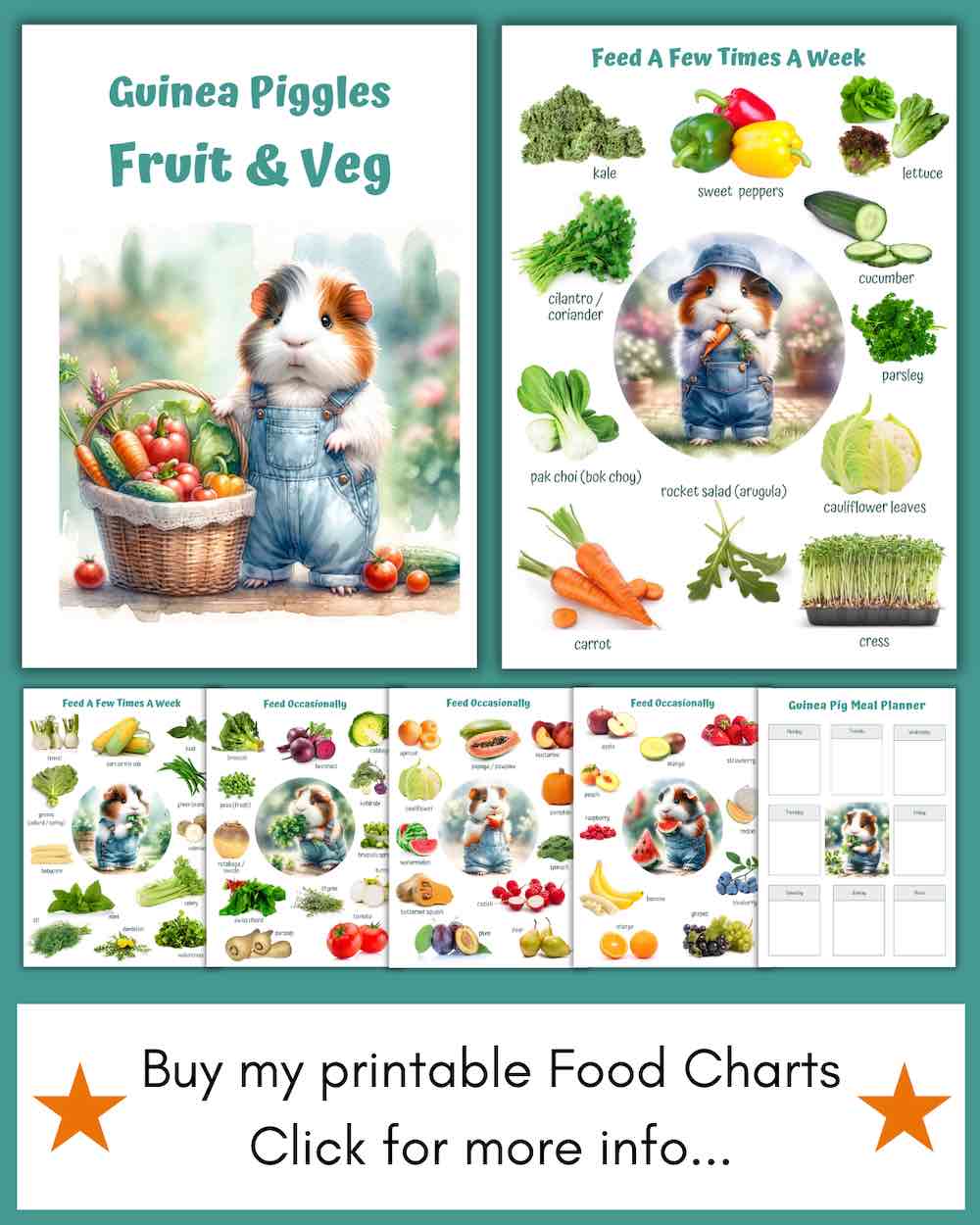Guinea pigs can eat spinach — including both baby spinach and larger mature leaves. However, while spinach is a healthy green that’s rich in nutrients, it also contains compounds that can cause health issues if fed too frequently.
There’s also a completely free alternative that your guinea pigs will love even more! Keep reading to find out what it is.
Benefits of Spinach for Guinea Pigs
- 🌿 Rich in Vitamin C — Spinach provides around 28mg of vitamin C per 100g, making it a useful source of this vital nutrient that guinea pigs can’t produce themselves.
- 🦴 High in Calcium — Contains a good amount of calcium to support strong bones and teeth.
- 🍃 Low in Sugar — Very low sugar content makes spinach a suitable leafy green for regular rotation in their diet (in small quantities).
⚠️ Oxalates in Spinach
Spinach might look like an ideal vegetable, but it’s extremely high in oxalates (oxalic acid) — a compound that can bind to calcium and lead to bladder stones, a painful and common condition in guinea pigs.
Because of this, spinach should be considered an occasional treat rather than a regular food. Too much spinach over time may increase the risk of urinary problems.
How Much Spinach Can Guinea Pigs Eat?
Spinach is safe for guinea pigs in small amounts once or twice a week. A little handful of leaves is enough, mixed with other fresh vegetables such as romaine lettuce, bell pepper, cucumber, kale, or celery.
💡 Tip: Variety is essential. Mixing different vegetables helps balance nutrients and reduces the risk of stone formation.
🚫 Can Guinea Pigs Eat Frozen or Cooked Spinach?
No — guinea pigs should only eat fresh, raw spinach. Cooked or frozen spinach loses its nutrients and may be harder to digest. Always wash the leaves thoroughly before serving.
💸 A Cheap (and Better) Alternative to Spinach
If you’re looking for a healthier and completely free option, try foraging for safe wild plants instead of buying spinach. Many weeds are more nutritious, lower in oxalates, and your guinea pigs will love them!
Try offering dandelion leaves, plantain, or chickweed — all safe, natural, and guinea pig-approved.
🌿 Find out more on our Guinea Pig Forage Page →

Nutrition Information
| Nutrition 🌱 | mg per 100g |
|---|---|
| Vitamin C | 25 |
| Calcium | 93 |
| Sugar | 0 |
| Water | 92.1 |
| Fibre | 2.5 |
| Phosphorous | 52 |
⚠️ Very high in oxalates — feed sparingly.
Safe Vegetables
🫑 Bell Peppers → Read the Bell Pepper guide ›
🥬 Bok Choy → Read the Bok Choy (Pak Choi / Chinese Leaf) guide ›
🥦 Broccoli → Read the Broccoli guide ›
🥕 Carrots → Read the Carrot guide ›
🌱 Celeriac→ Read the Celeriac guide ›
🌱 Celery → Read the Celery guide ›
🥬 Collard Greens → Read the Collard Greens guide ›
🌾 Corn on the Cob → Read the Corn guide ›
🥒 Cucumber → Read the Cucumber guide ›
🌼 Dandelion → Read the Dandelion guide ›
🌿 Fennel → Read the Fennel guide ›
🌿 French Beans (Fine Green Beans) → Read the French Beans guide ›
🥬 Kale → Read the Kale guide ›
🥬 Lettuce → Read the Lettuce guide ›
🌿 Spinach → Read the Spinach guide ›
🍅 Tomato→ Read the Tomato guide ›
🍃 Watercress→ Read the Watercress guide ›
Safe Fruits
🍎 Apple →Read the Apple guide ›
🍌 Banana →Read the Banana guide ›
🫐 Blueberries →Read the Blueberries guide ›
🍇 Grapes →Read the Grape guide ›
🍈 Melon →Read the Melon guide ›
🍓 Strawberries →Read the Strawberry guide ›
🍉 Watermelon →Read the Watermelon guide ›
Safe Herbs
🌿 Basil → Read the Basil guide ›
🌱 Coriander (Cilantro) → Read the Coriander guide ›
🌿 Dill → Read the Dill guide ›
🌱 Mint → Read the Mint guide ›
🌿 Parsley → Read the Parsley guide ›
